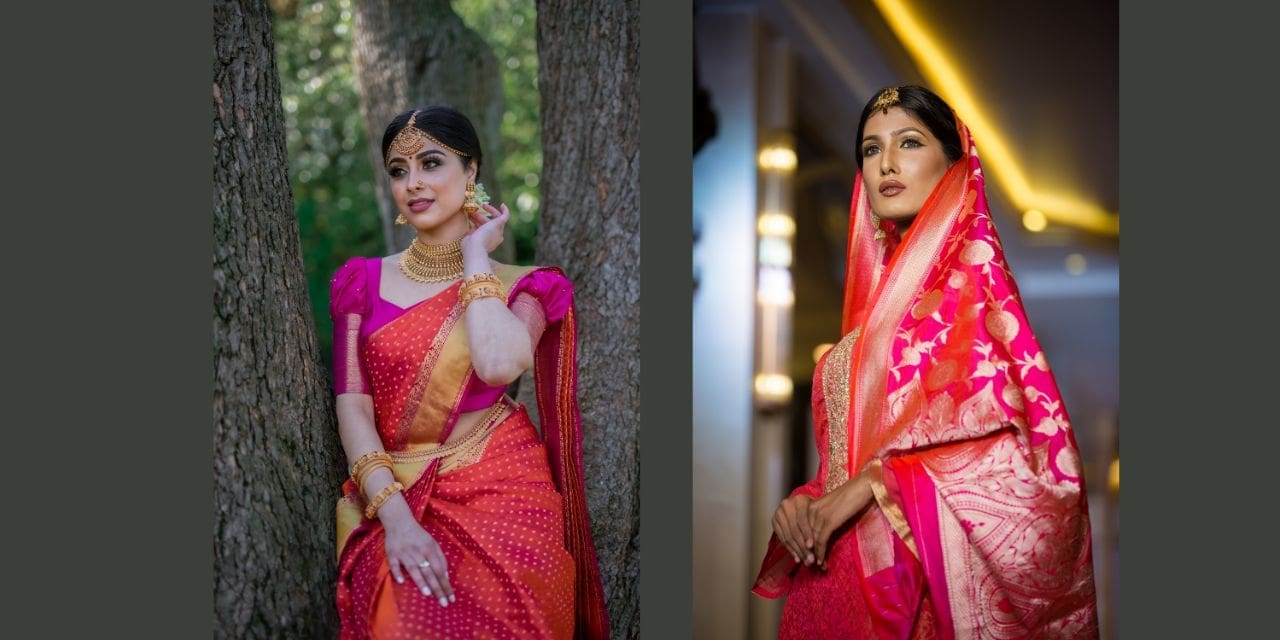Season to be marked by lavish and upbeat tones that offer a sense of luxury and hope in the face of adversity.
Bengaluru, October 21, 2022: The largest farm-to-fashion digital ecosystem for natural fibres in India, ReshaMandi, has identified the major trends that will influence consumer-buying behavior this festive season. The company recently introduced its trend forecast report, a first for the industry, that deep-dives into trends that will impact the industry for the next six months to a year. According to the most recent report for the upcoming festive and fall seasons, sales of sarees, a staple Indian ethnic wear and a crucial part of festival attire, are anticipated to increase. This is significant as particularly in the last two years consumers were keeping their celebrations very limited or casual due to the pandemic.
The season will be marked by rich, upbeat tones that offer comfort and luxury in the midst of challenges. Ten main colours are expected to dominate the colour scheme for the festive and winter seasons, namely classic blue, crystal teal, green jacket, love potion, rubocondo, orchid, jaffa orange, calendula, bright chartreuse, and star white. In November, it’s anticipated that slightly more sentimental hues like orchid and love potion will take centre stage alongside the traditional blue and green jacket and the same is expected to continue in December. The opulence of winter gradually gives way to the approach of spring in February and colours like jaffa orange, green jacket, and vivid chartreuse are predicted to grow increasingly in demand among consumers.
The prevalence of Indian traditional fabrics will continue, especially those used for sarees; soft silk, cotton, cotton silk, organza & tissue, chiffon, georgette, and banarasi silk are projected to be the most popular textiles. Given the popularity of reviving traditional clothing and promoting locally produced materials, traditional sarees such as those woven in the Kanjeevaram, Banarasi, Tant, Pochampally, and Kota styles are likely to be more in demand.
ReshaMandi’s Founder and CEO, Mayank Tiwari said, “With the popularity of Kanjeevaram, Banarasi, and Kota sarees, the anticipated trends for this festive season reflect the pan-Indian desire to embrace more natural materials and revitalize traditional weaving patterns. This is encouraging for us as a company working to build a productive environment for natural fabrics.”
Small border/borderless, micro motifs, updated zari, scalloped/lace edges, and translucency are likely to be favored in terms of details. Dots, stripes, and checks, painterly florals, delicate vines, cluster florals, birds and animals, and mix-and-match are among the popular patterns.
About ReshaMandi:
ReshaMandi is India’s first and largest digital ecosystem for natural fibre supply chain starting from farm to fashion. The company started with the focus on silk and has diversified adding other natural fibres like cotton, jute, coir and banana to the portfolio. ReshaMandi works with 60,000 farmers, more than 10,000 weavers, over 7,500 yarn manufacturers and 3500 retailers in the entire natural fiber supply chain to improve their productivity, impact their bottom line and eventually be instrumental in improving the quality of their lives.
ReshaMandi recently also ventured into D2C with its e-commerce platform weves.reshamandi.com that caters to end consumers, bringing them exquisite sarees from different parts of India. Today the company manages the full eco-system for all natural fibers catering to a diverse set of audience like farmers, reelers, weavers on one side and retailers, mills, manufacturers, exporters, corporates, designers & the end consumers on the other side of the spectrum.

